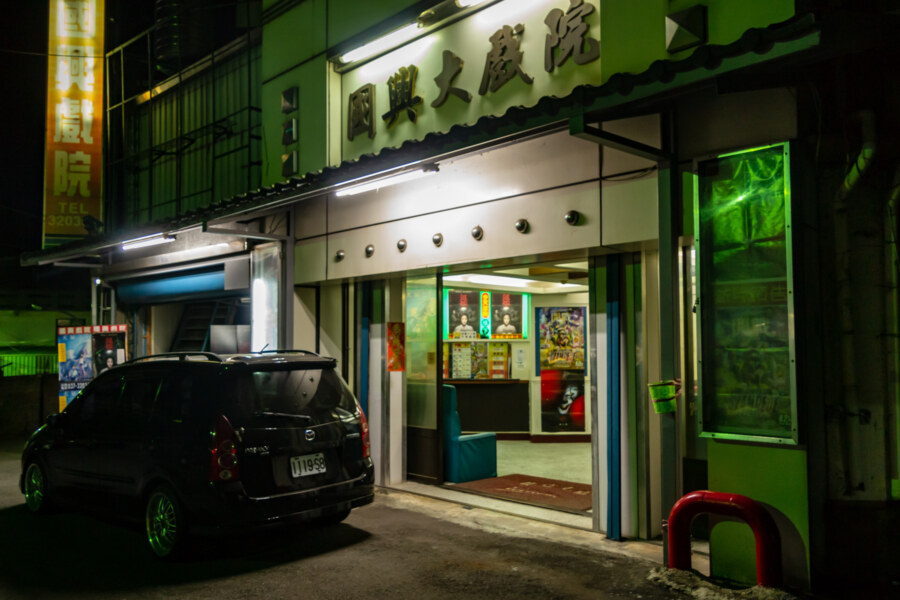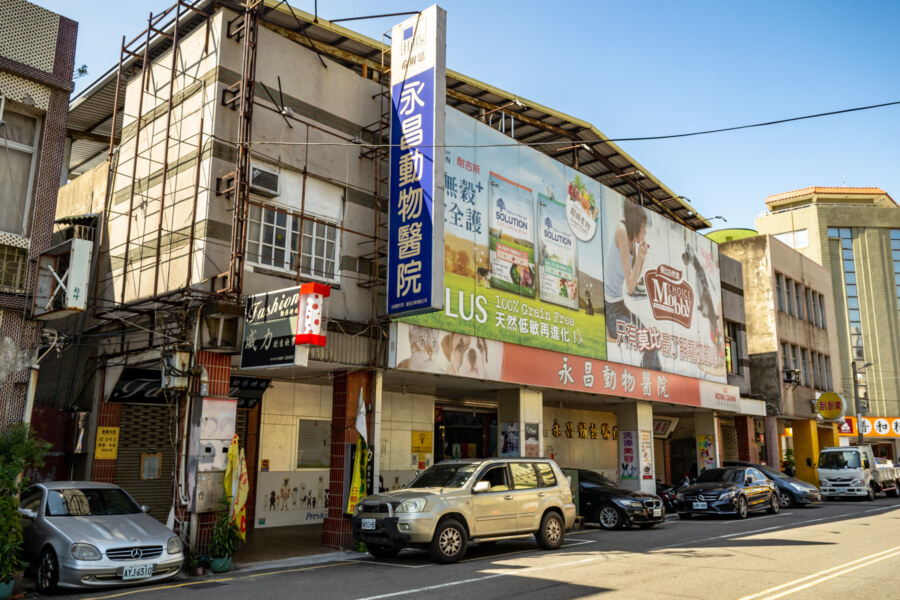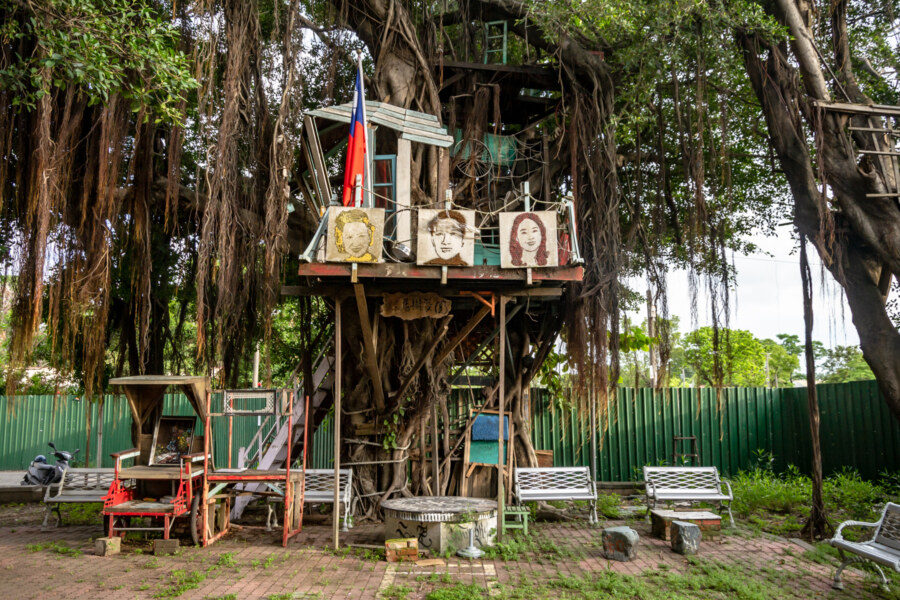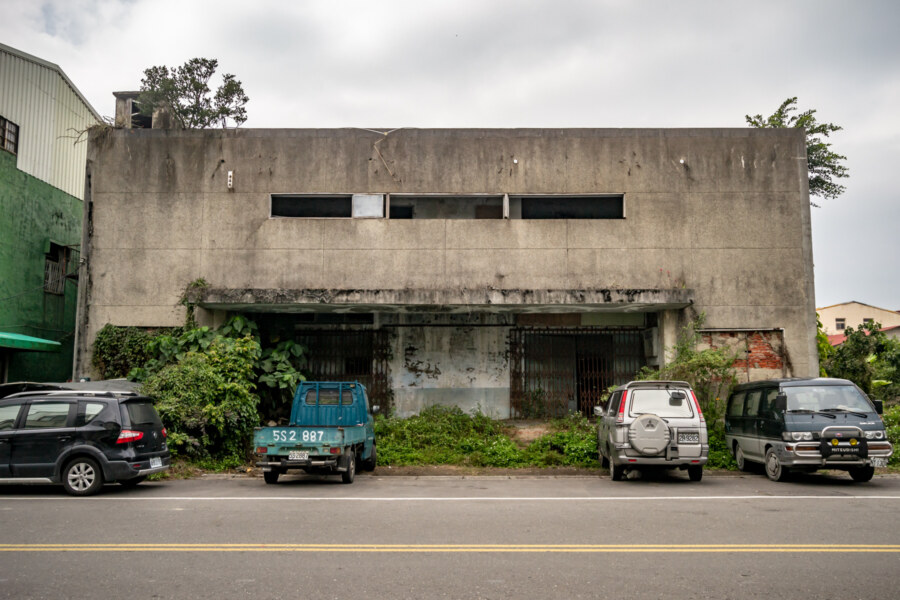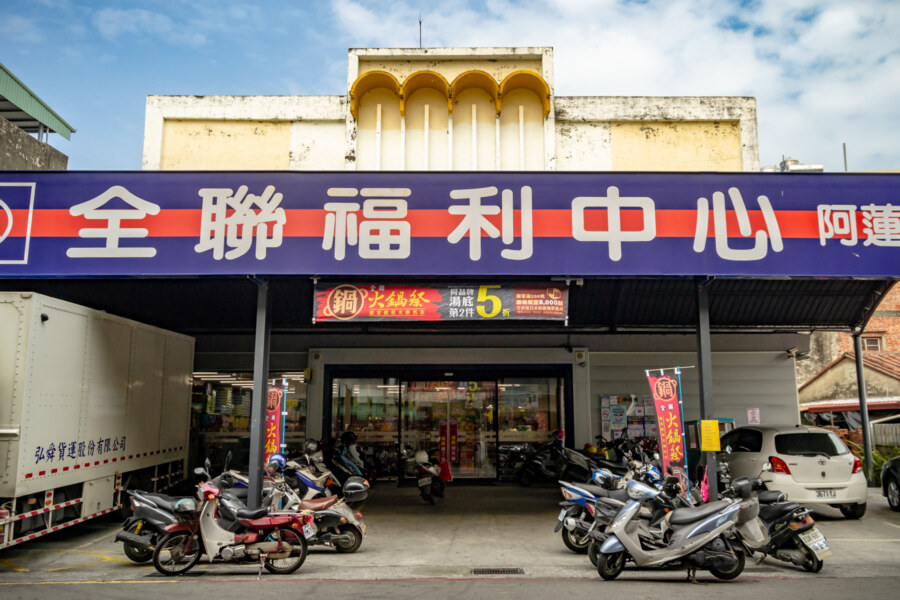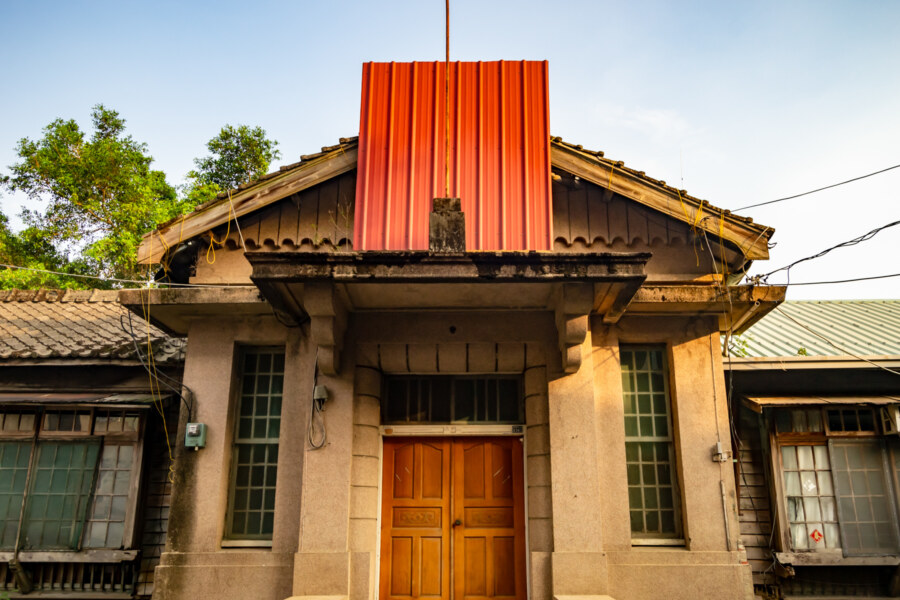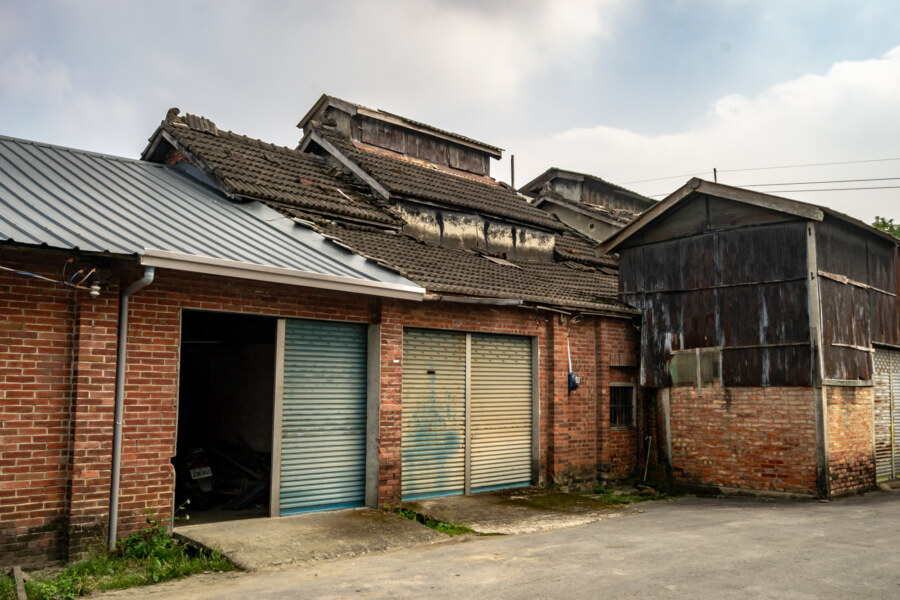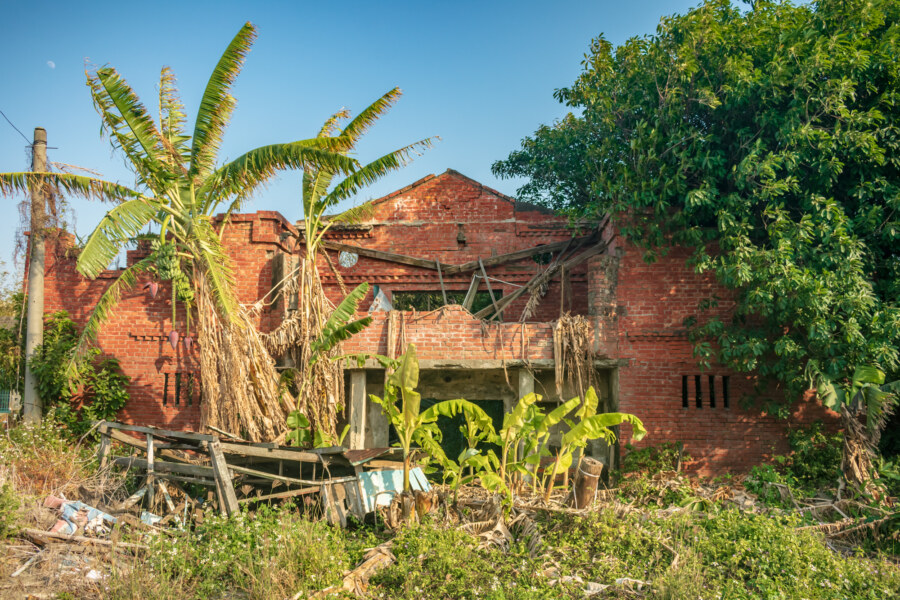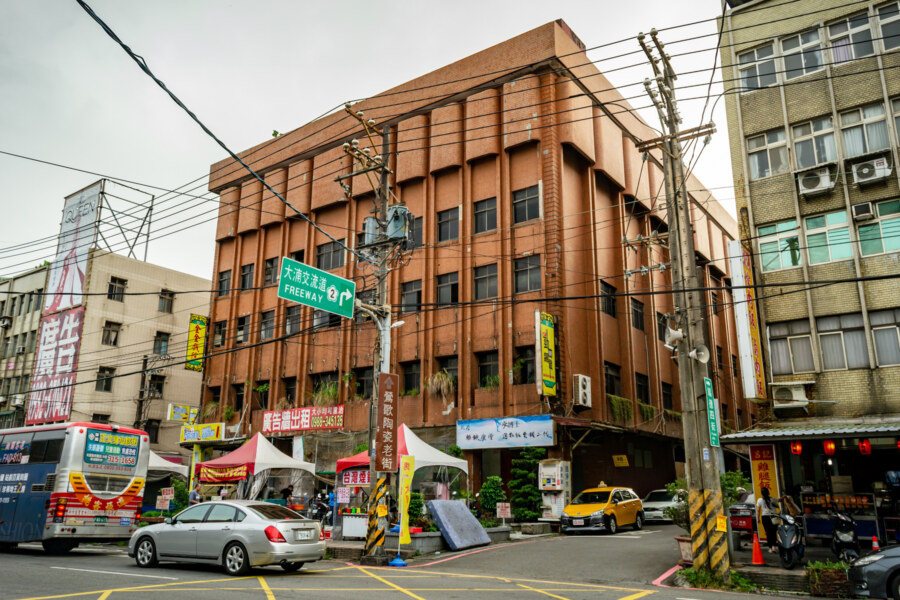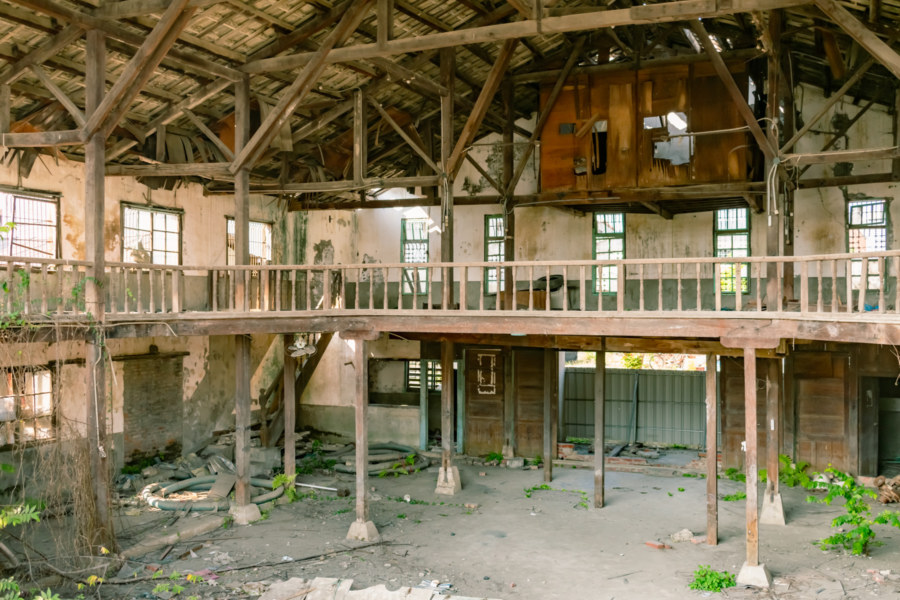Guóxìng Theater (國興戲院) was the very last standalone movie theater operating in Miaoli, Taiwan. After 70 years in the cinema business it closed for renovations in the final days of 2019, never to reopen. Apparently the intention was to return sometime after the Lunar New Year break in early 2020, but then the pandemic struck. Three years later it is probably safe to assume it’ll never show another film, marking an end to an era of independent cinema in Miaoli.
Miaoli Theater 苗栗戲院
The former Miaoli Theater (苗栗戲院) is located in the heart of Miaoli City, a mid-sized settlement of 86,000 residents in north-central Taiwan. Approximately 30 theaters were once found scattered around Miaoli County—with at least 5 located here in the city, but as of 2023 only two of those remain standing (with Guoxing Theater being the other one). Few authoritative sources exist to substantiate the early history of Miaoli Theater, but evidence indicates it was operating in the 1950s, and movies were shown all the way into the early 2000s—an unusually long run for a standalone theater from this era. It was eventually sold, shut down, and converted into the Yǒngchāng Animal Hospital (永昌動物醫院), a pet supplies store and veterinarian clinic.
Tainan Second Air Force New Village 台南二空眷村
The Second Air Force New Village (二空新村) is a former military dependents’ village in Tainan, Taiwan. It was established east of Tainan Airbase in 1950, primarily for members of the Republic of China Air Force and their families, and it eventually grew to become the sixth most populous of the official military villages in Taiwan. From 1950 into the 1960s several waves of construction and development increased the village to nearly 1,000 households, with a sizable number of unregistered structures scattered around the periphery. As with most other military villages this one was steadily dismantled and demolished over the course of many years in the late 2000s and early 2010s, part of a nationwide urban renewal program that relocated the remaining residents into more modern apartment blocks.
Nanxi Huazhou Theater 楠西華洲戲院
Huázhōu Theater (華洲戲院) is a long-abandoned cinema located in Nanxi, a rural district nestled in the low hills of eastern Tainan, Taiwan. Easily reached via Provincial Highway 3, the main settlement in Nanxi is situated along the middle reaches of Tsengwen River, the fourth longest in the country. Nanxi, like most other parts of rural Taiwan, has suffered an almost continuous population outflow for decades, with household registration numbers almost halving from around 14,000 in 1981 to merely 8,000 in 2023. With so many people departing in search of opportunity in bigger cities we are left to wonder, what inspired the construction of such a large theater in this downtrodden town?
Alian Theater 阿蓮戲院
Alian (阿蓮) is a rural township at the northern extent of coastal Kaohsiung, right on the border with Tainan, in southern Taiwan. Although it isn’t a very busy place nowadays, it was once home to two movie theaters, only one of which remains in any form. This is the eponymous Alian Theater (阿蓮戲院), in business since the 1960s, and now a branch of PX Mart (全聯福利中心), the largest supermarket chain in the country.
Toubiankeng Police Station 頭汴坑警察官吏派出所
Tóubiànkēng Police Station (頭汴坑警察官吏派出所) is a remarkably well-preserved Japanese colonial era building situated in a small settlement in the foothills of eastern Taichung, Taiwan. Originally established in 1914, the station was reconstructed to standard specifications with reinforced concrete, red brick, and local cypress, likely in the early 1930s. Not only was it a police station, but it also served as a dormitory for the officers stationed here, agents of a colonial authority keen to extend control into the rugged mountains to the east. After the ROC assumed control of Taiwan operations continued much as before, and was only decommissioned in 1981 when a new police station was built immediately out front.
Postcards From Linnei 林內明信片
Linnei is a small rural township located on the south side of the Zhuoshui River in northeastern Yunlin, Taiwan. Despite its strategic position on the Western Trunk Line this township remains mostly pastoral and undeveloped, with little industrial activity compared to neighboring Douliu, the administrative seat of the county. Population in the township peaked at nearly 23,000 in the 1970s and has been declining ever since, recently falling below 18,000 as rural flight continues apace. Nowadays the local economy mostly revolves around agricultural products such as rice, bamboo, and tea, but Linnei was once a major center of tobacco cultivation, traces of which can be found scattered across the countryside.
Kouhu Theater 口湖戲院
The overgrown ruins of Kǒuhú Theater (口湖戲院) can be found along a dusty country road on the outskirts of Kouhu, a desolate town in coastal Yunlin, at the westernmost extent of the Taiwanese mainland. Its most distinct feature is the exposed red brick facade, which might be unique among those vintage theaters still standing in earthquake-prone Taiwan. Not much is written about this old theater online, possibly due to its obscure location in the remote countryside, but it dates back to the early 1950s and likely remained in operation into the early 1980s.
Jinjin Theater 金金大戲院
The former Jīnjīn Theater (金金大戲院) is located midway along a major thoroughfare connecting Yingge with Taoyuan City in northern Taiwan. Technically it is still within New Taipei as the ragged border with Taoyuan swings around the theater, less than 100 meters away at some points. This second-run cinema opened to the public in 1985, screening a diverse assortment of films for as many as 900 guests in this highly industrialized suburb. It went out of business sometime around 2005 and has been mostly left to the elements since then, although food vendors still ply their trade along the sidewalk in front of the theater entrance, and some attempt has been made to sell commercial advertising space on the facade.
Ruimao Theater 瑞茂戲院
Ruìmào Theater (瑞茂戲院) is an old wooden theater hidden in the winding laneways of Guògōu (過溝), a small fishing and farming village in remote coastal Chiayi, Taiwan. Nobody seems to know exactly when this theater was established, although there is general agreement it likely dates back to the early post-war era. Remarkably, it was one of two theaters in this settlement, and one of maybe a dozen along this stretch of coast in the 1970s, when salt production and oyster farming buoyed the local economy. As with most other theaters of its vintage, this one closed sometime in the 1980s.
